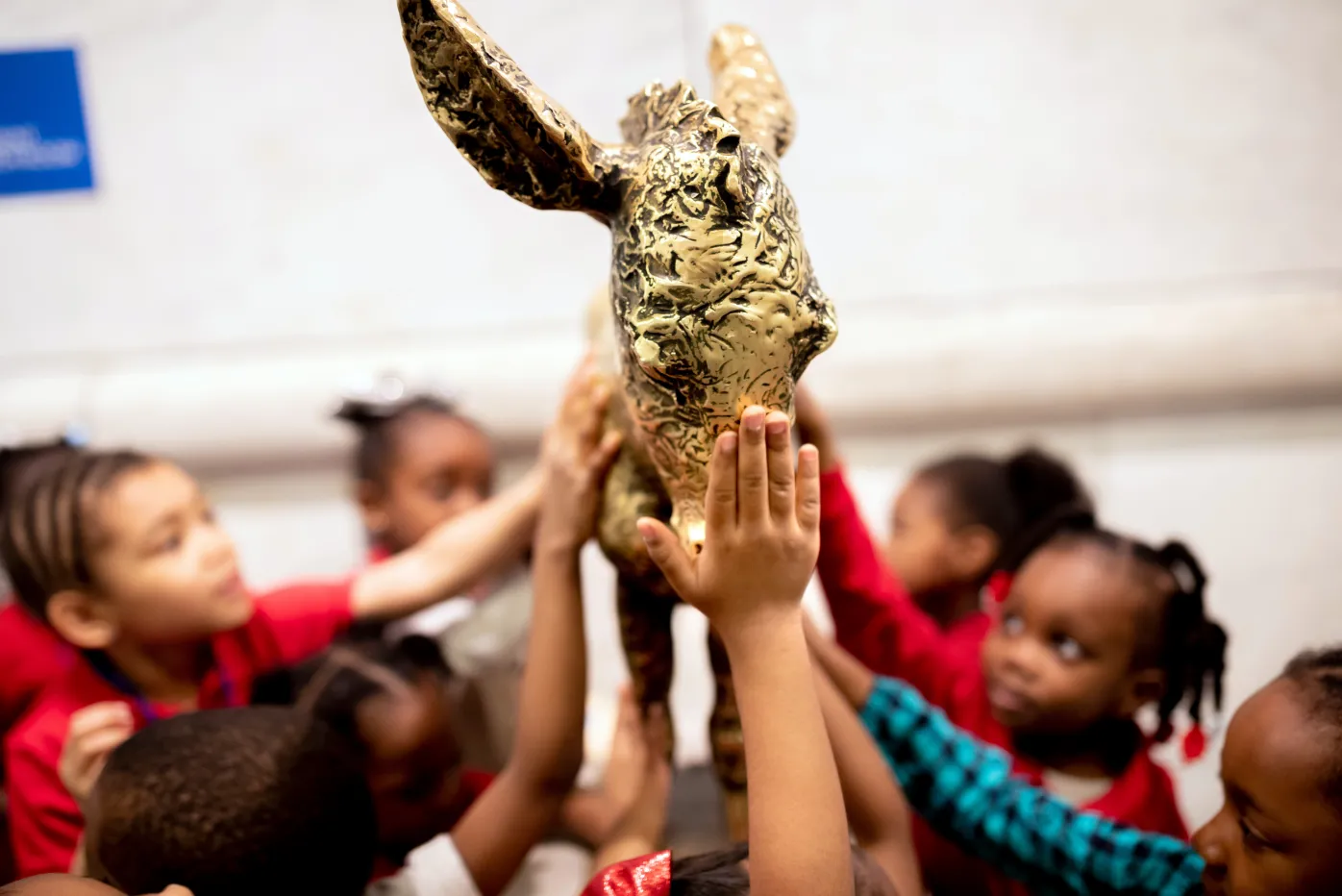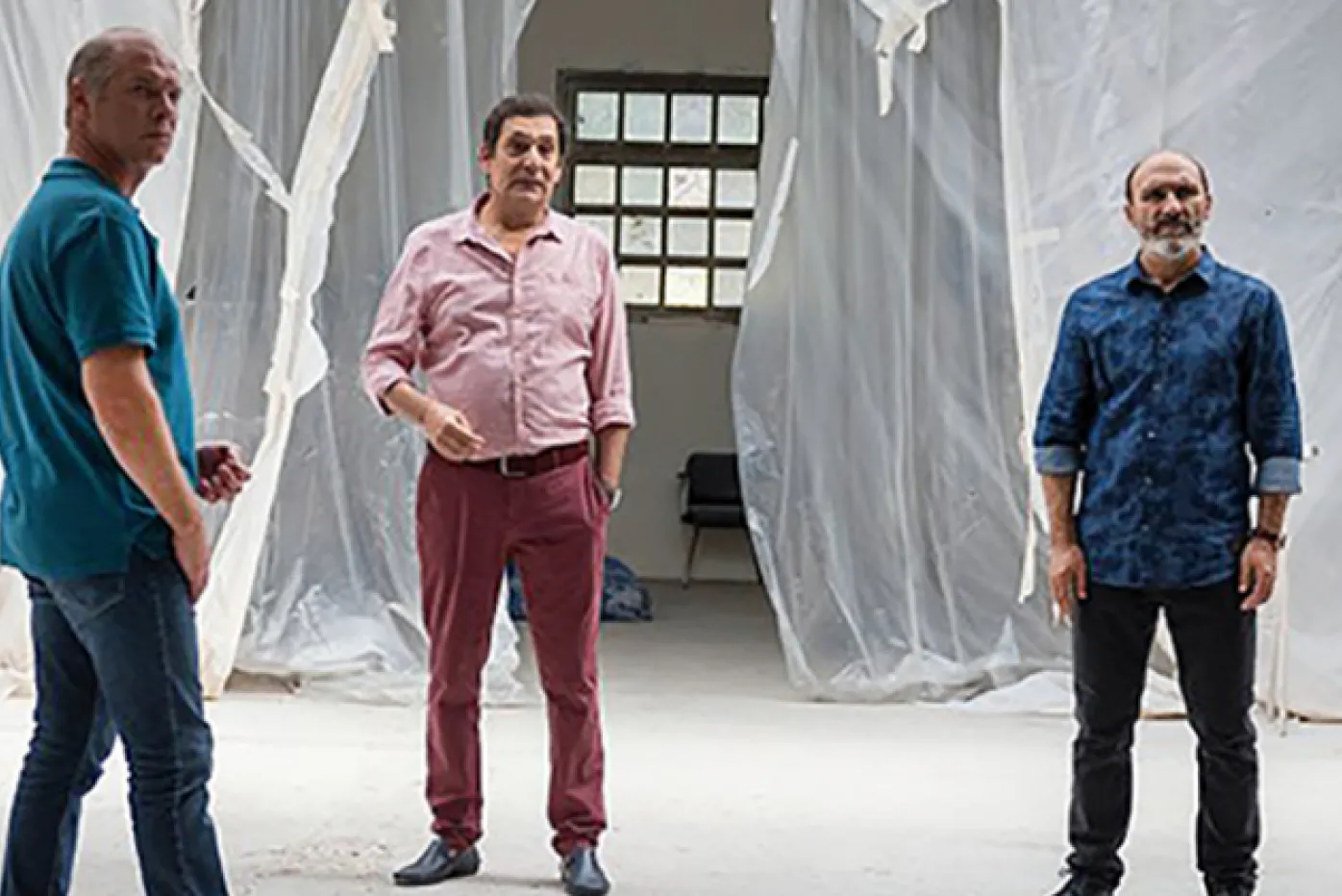What’s the story behind the DIA’s golden courtyard mascot?
Patting the donkey: everybody does it. Whether it's DIA regulars or visiting tourists, kids on school visits or couples on date night, stopping by to give Artie (as he’s widely known) a quick pat is a time-honored way to start a DIA visit. But where’s Artie from? What’s the backstory? And why, in a museum filled with irreplaceable treasures, is it okay to put your hands on an artwork?
“It’s a ritual,” says Francesca Catalfio, Visitor Experience Associate at the DIA. “And it’s not just children—I’ve seen plenty of CCS and Wayne State students coming in to pet him.” Catalfio’s own Artie memories go way back: her father brought her to the DIA as a child. When she was a Wayne State student, the DIA and DFT were date-night spots, and she has brought her children, and now grandchildren, for many visits over the years. Now on the museum staff, Catalfio has watched thousands of visitors beeline to the sculpture the moment they arrive. “He’s kind of a shared memory of this place,” she says.
Though it might seem Artie (nobody knows when the nickname started) was always intended as the museum’s mascot, he is a work of art called Donkey, acquired by the museum in 1928. Over the years, Donkey was installed in different places, and eventually, people began to touch it. The touching has taken a toll; he isn’t supposed to be so shiny. But that damage is its own teaching tool, explains Morgan Hollemans, Gallery Teacher Team Lead, whose team works with thousands of schoolchildren every year.
“Artie has visible wear and tear, so we use that as an example for the kids of why you’re not supposed to touch artwork in the DIA” she says. “They’ll talk about how it’s darker under his belly because you can’t reach there. And then they check their fingertips to see if there's bronze on their hands.”
For Barbara Heller, Director and Conservator of Special Projects, Donkey is first and foremost a work of art, created by the German sculptor Renée Sintenis in 1927. A celebrated artist at a time when women artists were rare, and successful ones even less so, Sintenis was known for small-scale bronze sculptures with a detailed surface, or patina. “Her technique was distinctive and modern,” says Heller. One of Sintenis’s sculptures was given to President John F. Kennedy during his historic visit to Berlin in 1963; another sits in Griffith Park in Los Angeles, a gift from Berlin to its sister city.

Artie the Donkey on view in the DIA's Rivera Court in 1928, just a few years before the Detroit Industry murals were painted.
The DIA first installed Donkey in the Garden Court until that became Rivera Court. The sculpture then moved to the Romanesque Hall next to a small fountain. That’s when touching became a thing, says Heller. People would throw pennies into the fountain and pat the statue, gradually wearing away the unique subtle grooves on its nose. By 1953, the Donkey’s back was shiny as well. In 2009, the sculpture was moved to the newly renovated Beverly J. Prentis Court, and the petting went big. “The director at the time allowed it to be touched, because people were already touching it,” says Heller.
“It’s amazing to me that it’s going to lose all its texture,” she adds. "That sculpture is 95 years old, and in the 15 years since it was reinstalled, the patina is almost totally gone.” But she also understands that Donkey occupies a unique role. “People love it, kids run to see it, they get their picture taken with it. It’s a mascot.”
Artwork, teaching tool, mascot, memory-maker; Artie does a lot of work. On Facebook, commenter Marie Mullins posted:
“I have many fond memories of Artie as a child; my dad would lift me up and I would stroke his ears and nose and neck. I still like to give him a pet when I walk by. He definitely gave me a respect for not touching art that has persisted to this day.”
Love Artie? Keep him on your fridge with this unique magnet from the DIA shop!



